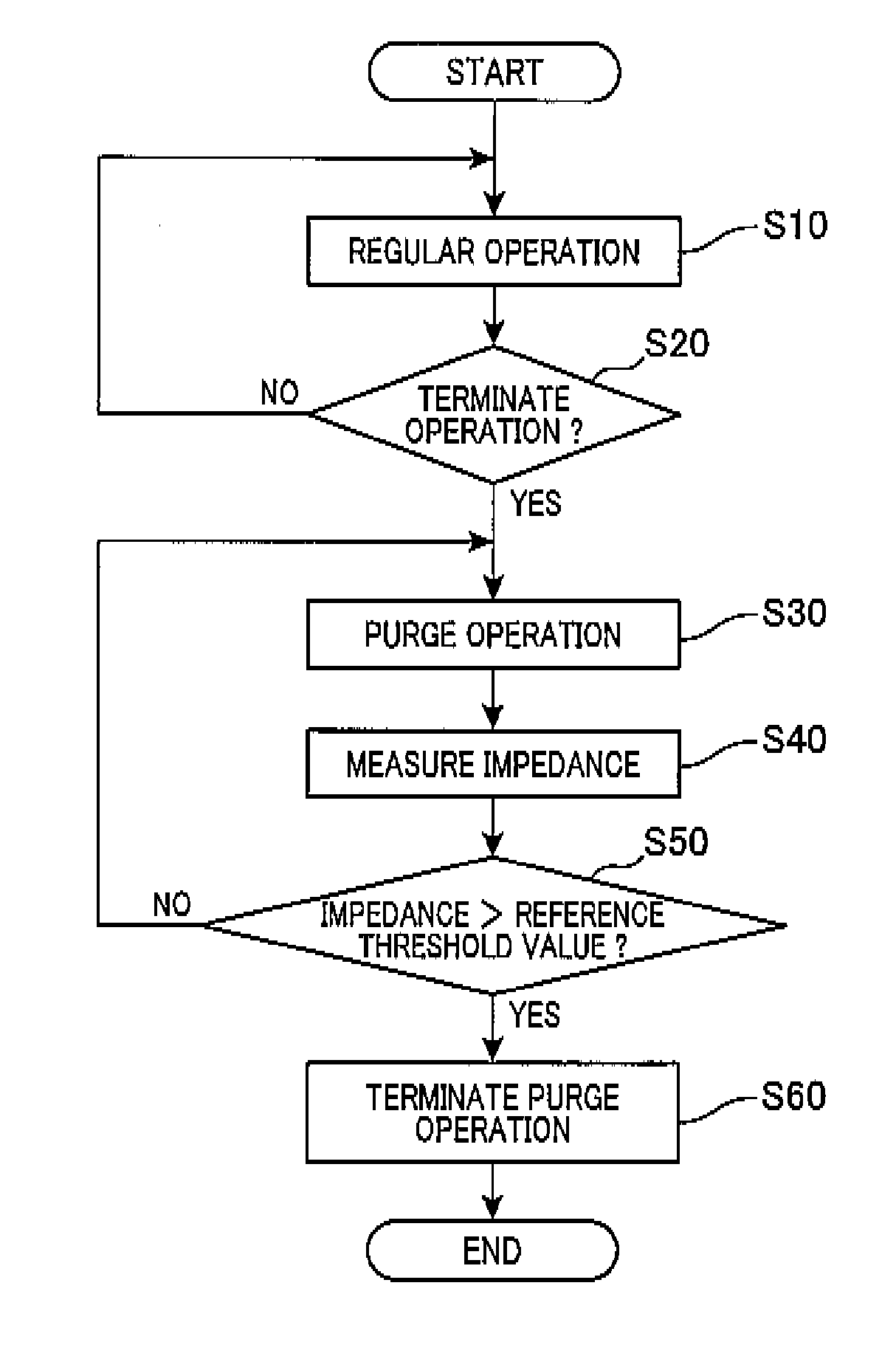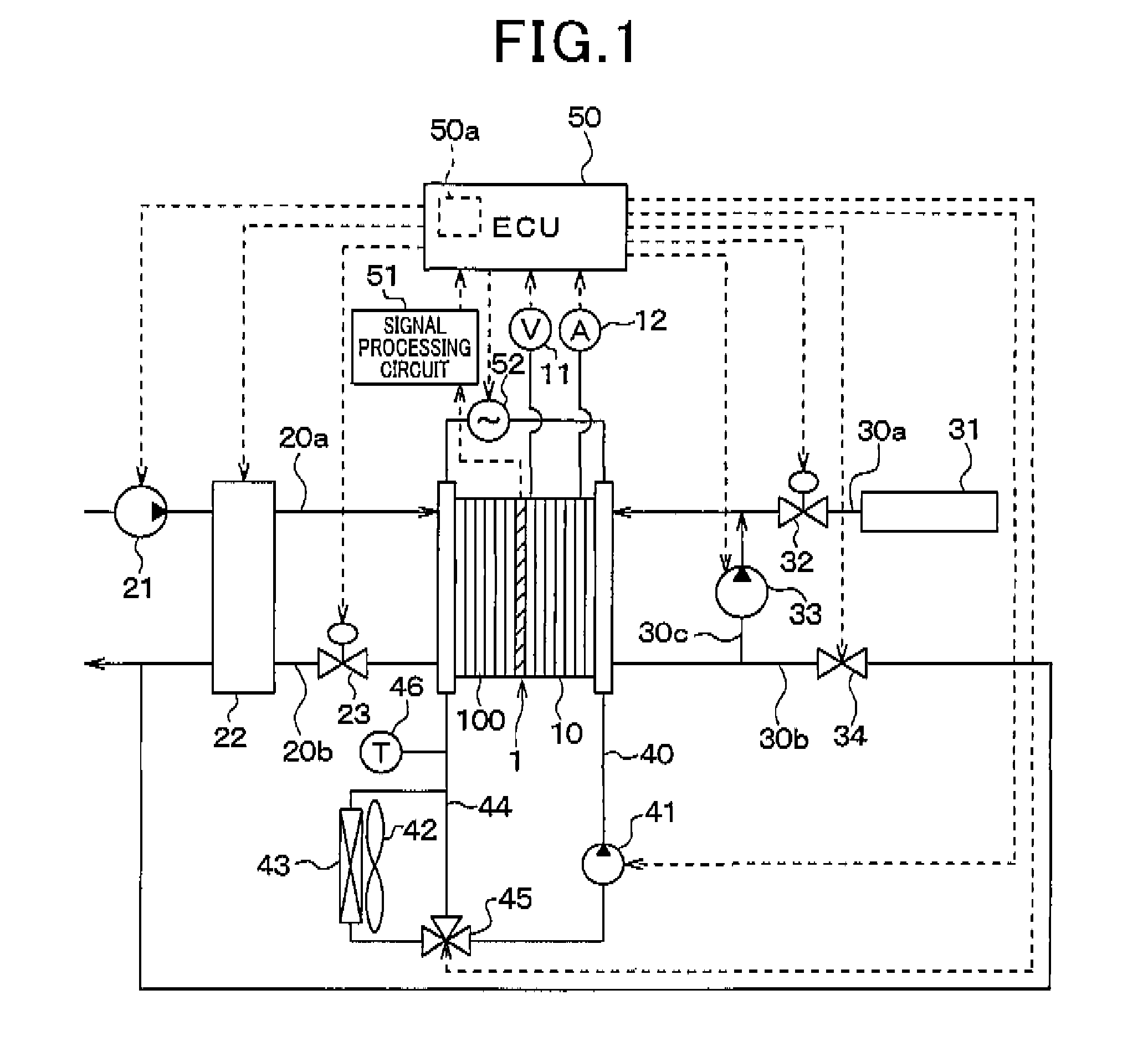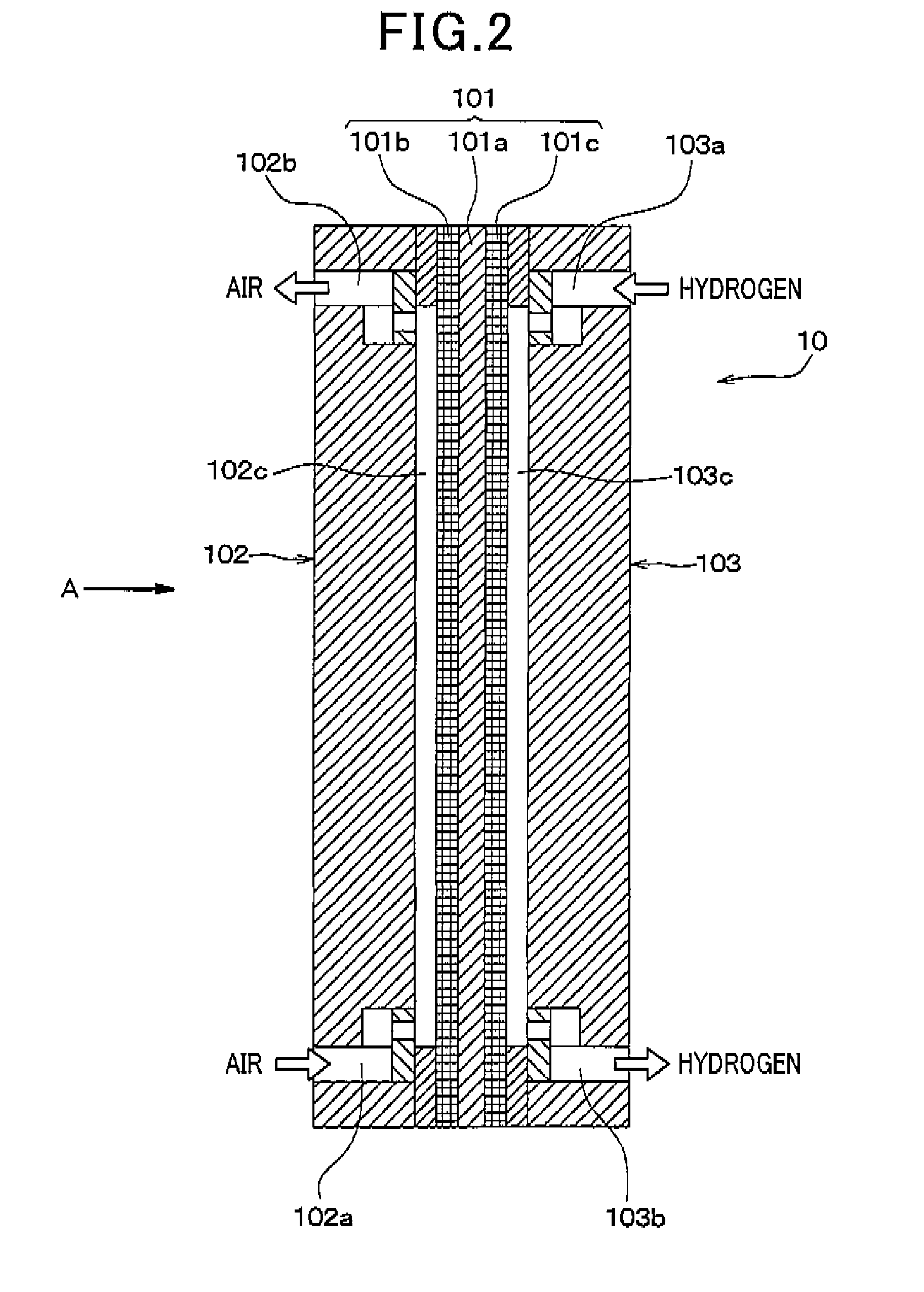Fuel cell system capable of performing gas purge to adjust amount of water therein
- Summary
- Abstract
- Description
- Claims
- Application Information
AI Technical Summary
Benefits of technology
Problems solved by technology
Method used
Image
Examples
first embodiment
[0035]With reference to FIGS. 1 to 8A and 8B, the fuel cell system according to the first embodiment is described hereinafter. FIG. 1 is an overall configuration of the fuel cell system according to the first embodiment. The fuel cell system can be adapted to vehicles, for example, electric vehicles.
[0036]As shown in FIG. 1, the fuel cell system of the first embodiment is provided with a fuel cell 1 that generates electric power by electrochemical reaction between hydrogen and oxygen. The fuel cell 1 supplies power to the electrical load (not shown) or electrical equipment such as secondary battery. It is noted that an electric motor as a vehicle power source may correspond to an electrical load when the fuel cell system is adapted to the electric vehicle. The fuel cell 1 and the electrical load are electrically connected via a DC-DC converter 52 (described later).
[0037]According to the first embodiment, a solid polymer electrolyte fuel cell as a fuel cell 1 is employed where a plur...
second embodiment
[0085]Next, the second embodiment is described hereinafter. In the above-described first embodiment, it is determined that whether or not the gas purge processing should be terminated by using the predetermined reference threshold value (S50). However, in the second embodiment, the reference threshold value is changed based on the temperature of the fuel cell 1.
[0086]FIG. 9 is a diagram showing a relationship between an amount of residual water in the fuel cell 1 and the impedance value depending on the temperature of the fuel cell 1. As shown in FIG. 9, even when the amount of water in the fuel cell 1 is not changed, the impedance value of the fuel cell 1 tends to increase as the temperature of the fuel cell 1 decreases according to the Arrhenius's law.
[0087]Therefore, the gas purge processing according to the second embodiment, the lower the temperature of the fuel cell 1, the larger the reference threshold value. Specifically, a control table which determines a relationship betwe...
PUM
 Login to View More
Login to View More Abstract
Description
Claims
Application Information
 Login to View More
Login to View More - R&D
- Intellectual Property
- Life Sciences
- Materials
- Tech Scout
- Unparalleled Data Quality
- Higher Quality Content
- 60% Fewer Hallucinations
Browse by: Latest US Patents, China's latest patents, Technical Efficacy Thesaurus, Application Domain, Technology Topic, Popular Technical Reports.
© 2025 PatSnap. All rights reserved.Legal|Privacy policy|Modern Slavery Act Transparency Statement|Sitemap|About US| Contact US: help@patsnap.com



